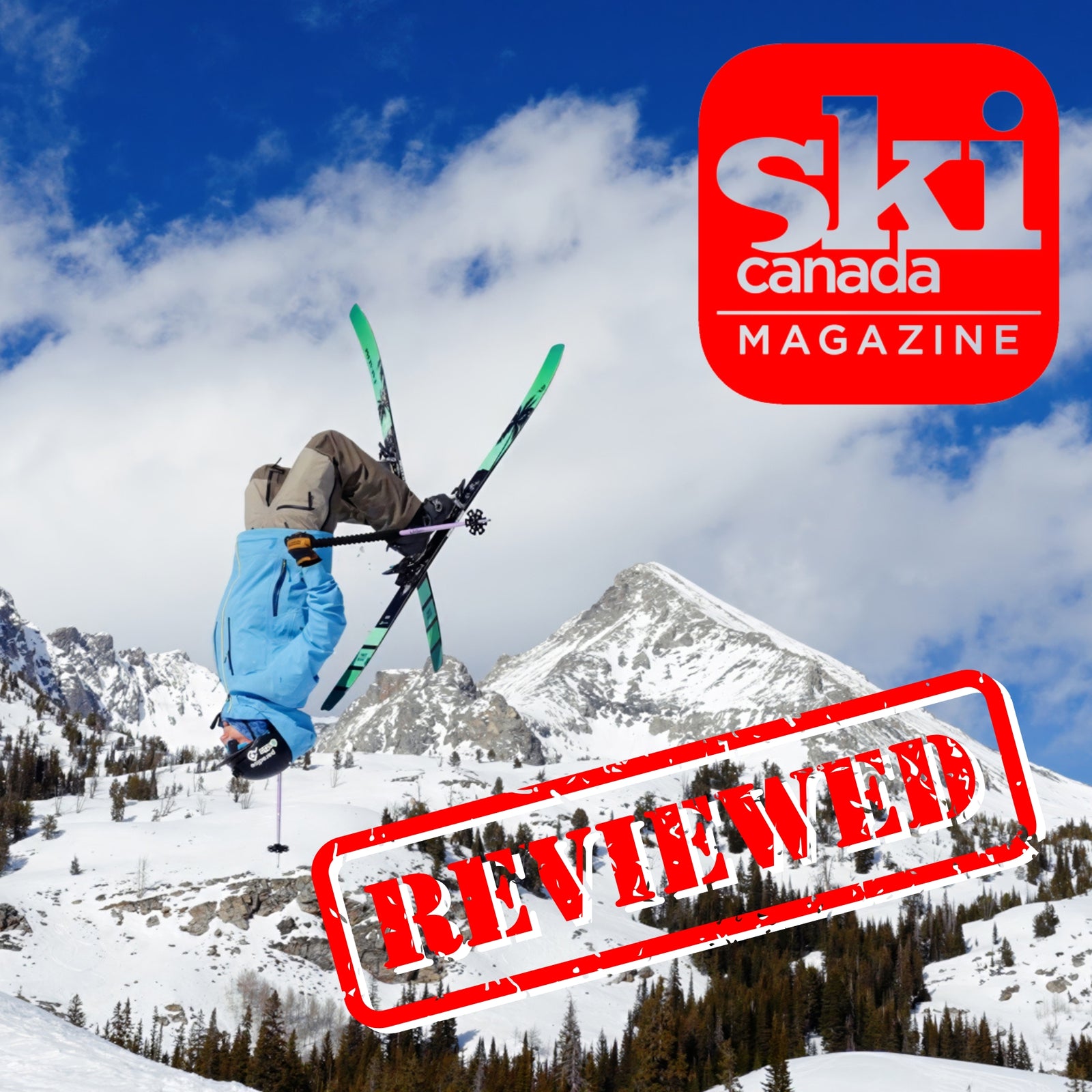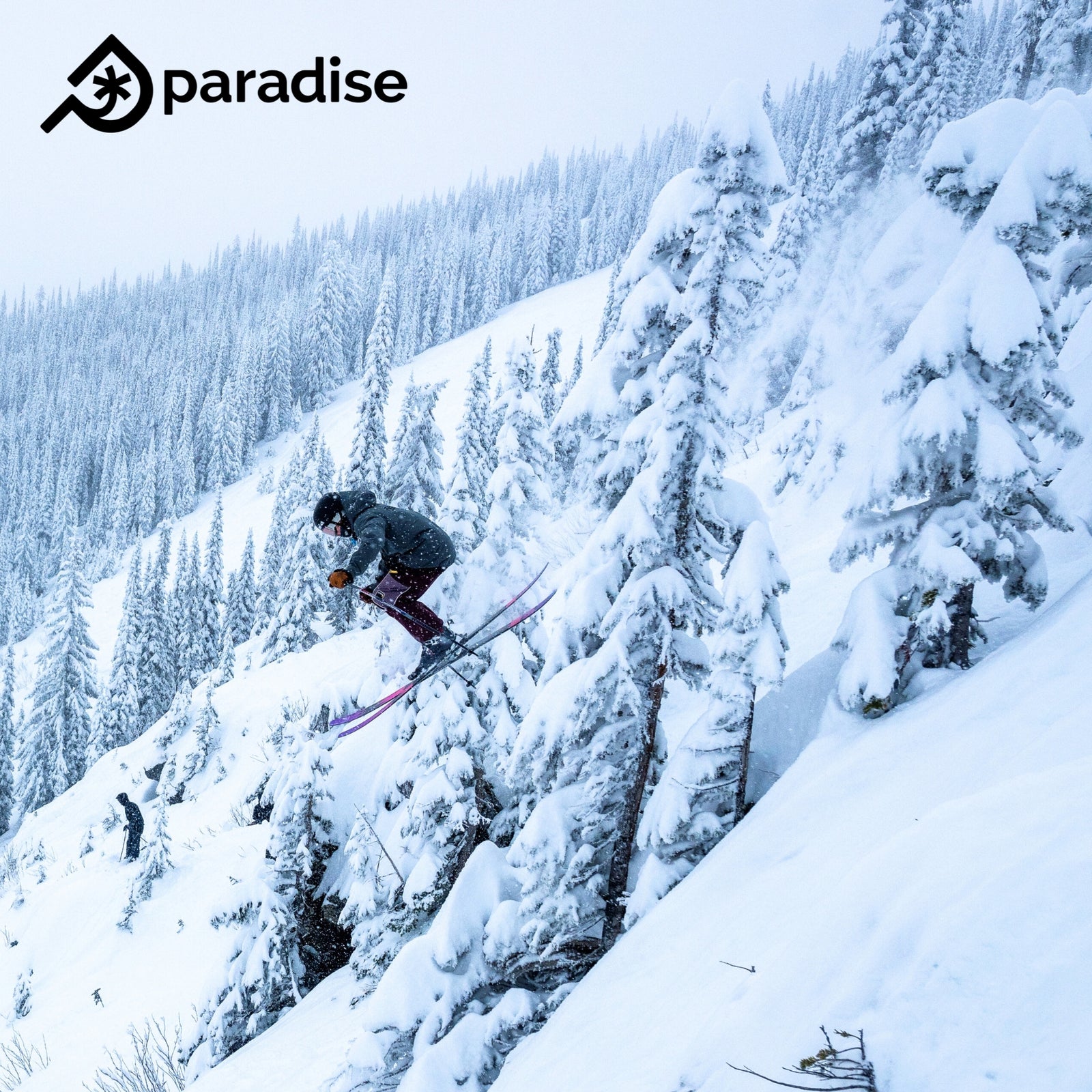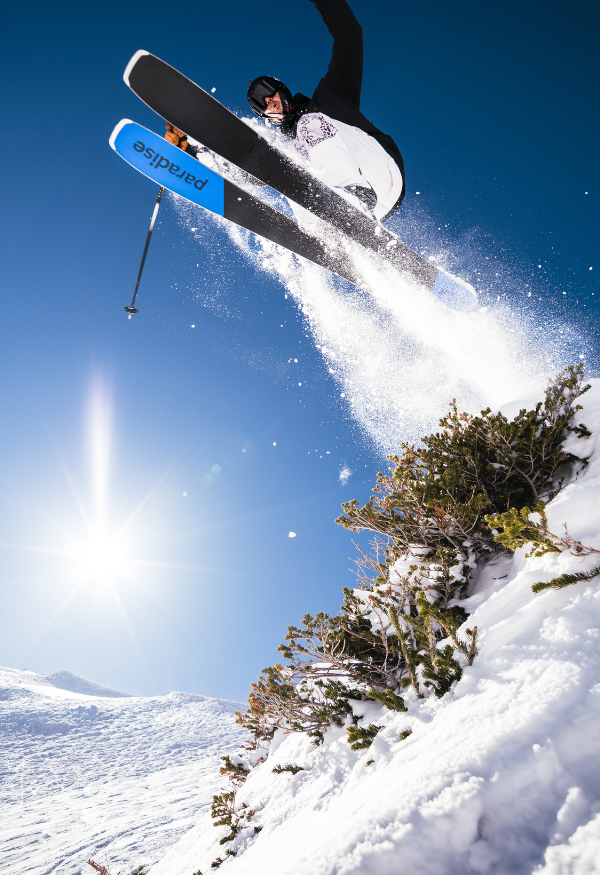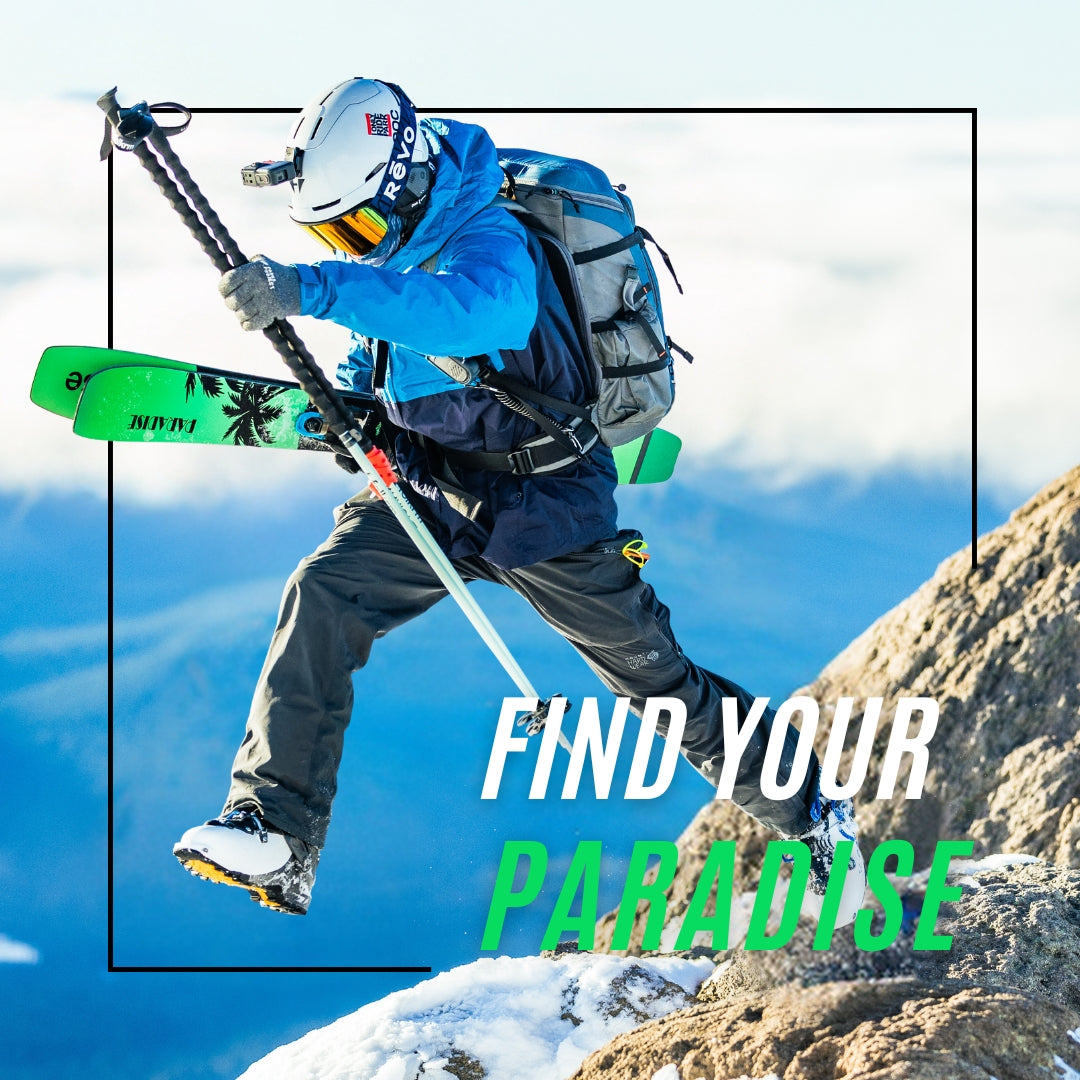Your Cart is Empty
#anotherdayinparadise
#anotherdayinparadise
SKIS & BOARDS
ABOUT US
Accessories
Bindings
What is splitboarding?
November 16, 2023 4 min read

Backcountry Snowboarding Without The Bootpacking
Written by Mila Tytchina, Flamingo Splitboard photos by Bella Witten.
Canada is known for its breathtaking landscapes, mountain ranges, and endless backcountry terrain, making it a winter paradise. For snowboarders seeking a unique way to explore the backcountry, splitboarding is the answer. In this blog, we'll dive into splitboarding, how it works, and of course, what gear you'll need.
Splitboarding Defined
Splitboarding is a winter sport that combines the thrill of snowboarding with the versatility of backcountry skiing. It evolved as a solution for snowboarders who wanted to venture off-path without the need for specialized equipment like snowshoes or cross-country skis. Unlike traditional snowboarding, which relies on chairlifts or bootpacking, splitboarding allows you to access untouched, remote terrain by "splitting" your board into two separate skis. This transformation enables you to climb uphill and then reassemble your board into a snowboard for the descent, providing the ultimate off-piste experience.
How Does A Splitboard Work?
Hooks & Clips
A splitboard looks just like a regular snowboard, but it can be separated into two separate skis by removing a specialized clip & hook system. The hooks and clips are typically made of metal and plastic and snap together for a snug fit that connects the two halves of the board. We believe simple designs are the best; that's why our Flamingo Splitboard comes with the Phantom Snow Industries Hercules Clips & Hooks (in our opinion, these are the best hooks available on the market).
Climbing Skins
When you split your board into skis, you attach climbing skins to the base of each ski. These climbing skins have an adhesive side that sticks to the base of your board and a fur side that grips snow, providing the necessary traction for ascending slopes and preventing backward sliding while allowing forward movement. Our favourite bindings are the Black Diamond Glidelite Mohair Mix Climbing Skins due to their mix of packability and traction. It's important to make sure that the skins you buy will fit whichever board you have.
Splitboard Bindings
Splitboard bindings take the shape and form of standard snowboard bindings, however, split bindings rest on "pucks" which are mounted on the board. You'll have one set of pucks where your feet will stand when snowboarding down, and another set mounted in the centre of your "skis" for the uphill. The pucks mounted for the skiing part clip the front of the binding in and release at the heel to mimic a cross-country skiing motion, making it easier to go up steep slopes. After reaching your desired location or mountain peak, you reassemble the splitboard back into the snowboard configuration. Simply snap the two skis back together, lock your bindings in place, and you're ready to carve your way down the mountain, just like traditional snowboarding. We really like Spark R&D bindings.
Choosing The Right Splitboard
Generally, you want to choose a splitboard based on what types of tours you want to be doing. Long/multi-day alpine missions? Short, daily treks? Or how about a board for those backcountry pow days? Here are some general guidelines about what you want to look for when shopping for a splitboard.
- All-Mountain Riding: all-mountain splits are great for your short tours where you might be getting multiple runs in through variable terrain. Typically an all-mountain board will be a directional twin rip and have a rocker-camber-rocker type of profile. Everyone likes something different when it comes to an all-mountain board.
- Long Missions/Mountaineering: when it comes to long tours in the backcountry, or mountaineering, weight is your enemy. You want a light, but solid and dependable board that you can really grip an edge on. We recommend a rocker-camber-rocker profile and a directional or directional twin shape. Look for a board with carbon fibre - as when you're climbing to summit peaks, you want to conserve all the energy you can.
- Powder Splits: we all dream of those waist-deep powder days, and if you're in the right places, you can find them (looking at you, Rogers Pass). Powder boards usually have a fat, rockered nose and taper towards the tail with a directional shape. Often, pow boards will be short but wide.
The Flamingo Splitboard
The Flamingo Split is a unisex board designed to be a go-to daily backcountry board that works for either shorter missions or long tours/mountaineering. It has great edge control with a rocker-camber-rocker profile and a directional twin shape, perfect for aggressive backcountry riding where you want a lightweight board that does it all. The Flamingo uses our Feather-Lite Split Core, Hybrid Carbon Tech, UHMWPE Sidewalls, Anti-Ice topsheets (so you don't carry snow with you on the way up), and Nose & Tail Armour. Engineered for adventurous backcountry riders, offering stability, versatility, and grip in challenging conditions, it's suitable for intermediate to professional riders who love pushing their limits! Here is a great video discussing the Flamingo Splitboard:
Backcountry Safety
Avalanche safety courses are a must if you plan on getting into the backcountry. Here in the Rocky Mountains, you need to be prepared for avalanche risk and know how to manage that risk and take precautions. DO NOT go backcountry riding before taking your AST1 course. Along with your course, you NEED a beacon, probe, and shovel - you must also know how to use them properly and efficiently. Here is an article that shows places in Alberta where you can get your AST1 course.
Here's an awesome article on what to keep in your split boarding backpack.
Leave a comment
Comments will be approved before showing up.
Also in Blog

SKI CANADA MAGAZINE - VICE TOUR REVIEW
November 28, 2024 2 min read
A review on our VICE TOUR freeride toruing ski by Ski Canada Magazine! Read the full review here.
Read More
Pre-Ski Workout: 4 Exercises to Get You Ready For Ski Season
August 20, 2024 5 min read
Four great exercises to help you get in shape for this ski season!
Read MoreSubscribe
Sign up to get the latest on sales, new releases and more …
Stay up to date with us!
Stay up to date with your favorite ski company! Free stickers, events, discounts, and news; no spam - we promise.

SUBSCRIBE TODAY
Paradise Newsletter Subscribers receive exclusive deals and hear news first!





